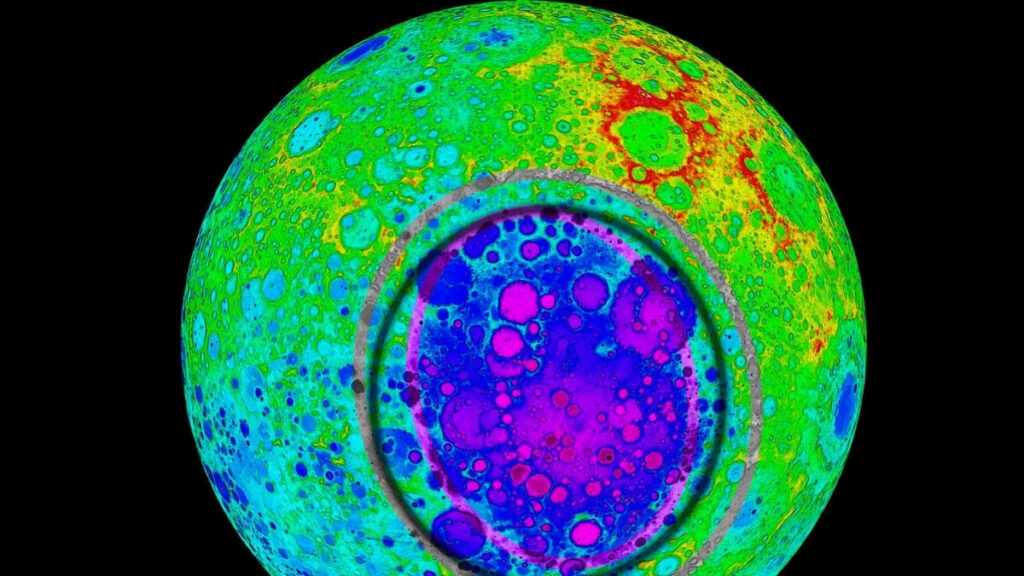
The upcoming Artemis missions aim to explore the South Pole-Aitken basin, the largest crater on the Moon, which has revealed new insights into its formation and geological history. Recent research from the University of Arizona indicates that the basin, formed around 4.3 billion years ago by a significant asteroid impact, may hold crucial clues about the Moon’s early evolution.
One of the key discoveries made by Jeffrey Andrews-Hanna and his research team is the shape of the South Pole-Aitken basin. Traditionally, scientists believed that the impact that created the crater originated from the south. However, new analyses reveal that the basin actually narrows toward the south, indicating that the asteroid struck from the north. This finding has significant implications for the Artemis missions, which are targeting the southern rim of the basin.
Understanding the orientation of the impact is critical. Impact craters typically do not distribute their excavated material uniformly. The area at the down range end of a basin is often covered by a thick layer of ejecta, while the upper range receives far less debris. Since the Artemis missions plan to land near the southern rim, the new understanding of the impact direction suggests that astronauts will be well-positioned to study material from the Moon’s deep interior, essentially obtaining geological core samples without the need for drilling.
The material excavated from the South Pole-Aitken basin is particularly intriguing. Early in its history, the Moon was enveloped by a global magma ocean. As this molten layer cooled, dense minerals sank to form the mantle, while lighter minerals rose to create the crust. Certain elements, such as potassium, rare earth elements, and phosphorus—collectively known as KREEP—remained concentrated in the final remnants of the liquid magma.
Historically, KREEP has been found predominantly on the Moon’s near side, which faces Earth, leading to questions about its distribution. The presence of radioactive material contributed to intense volcanic activity, creating the dark basaltic plains that characterize the near side. In contrast, the far side of the Moon is heavily cratered and relatively devoid of volcanism.
The new study proposes that the Moon’s crust is significantly thicker on the far side, an asymmetry that has puzzled scientists. As the crust thickened, it likely pushed the remaining magma ocean towards the near side. The South Pole-Aitken impact serves as vital evidence for this theory. The western side of the basin shows high concentrations of radioactive thorium, a signature element of KREEP-rich material, while the eastern side does not exhibit such concentrations.
This asymmetry suggests that the impact penetrated the lunar crust right at the boundary where a thin layer of KREEP-enriched magma still existed beneath parts of the far side. Essentially, the collision provided a glimpse into the transitional zone between the KREEP-rich near side and the more typical crust of the far side.
As astronauts from the Artemis missions collect samples from this radioactive region, they will bring back materials that could help validate these models with unprecedented detail. Analyzing these rocks could offer insights into how the Moon transitioned from a molten sphere to the geologically diverse body it is today. The contrasting features of the two hemispheres may reveal two distinct narratives of the Moon’s geological past.
This research was published in the journal Nature and highlights the exciting potential of upcoming lunar missions to deepen our understanding of Earth’s natural satellite.






